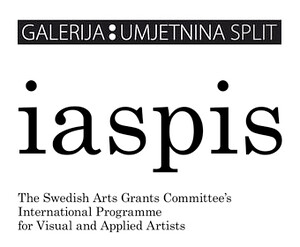Contaminated Zones
December 10, 2015–January 7, 2016
Museum of Fine Arts (Galerija Umjetnina), Split is pleased to present Contaminated Zones, a project by the Swedish artist Jesper Nordahl.
Curated by Basak Senova and Branko Franceschi, the project contains two video works that are interconnected with the political and economical deviations that accompany the process of privatization in Sri Lanka.
Katunayake Free Trade Zone is an aerial recording of the Katunayake Free Trade Zone, close to Colombo and the International Airport in Sri Lanka. Free Trade Zones, which are special economic and highly protected areas with factories for export, were established in Sri Lanka in 1978 as part of structural adjustment policies introduced by the IMF and World Bank.
Untitled—An interview with Nimalka Fernando, Colombo, Oct. 2011 is based on an interview with Nimalka Fernando, who is an attorney-at-law and women’s rights activist from Sri Lanka.
The content of both works depicts remarkably similar situations and transformations all over the globe.
Jesper Nordahl (b. 1969, Stockholm) works with a variety of media to produce critical works based on his artistic research. His field of research addresses urgent situations ranging from politics to social and gender related issues. Nordahl graduated from the Royal Institute of Art in Stockholm in 2000 and completed the Whitney Independent Study Program in 2007.
Nordahl use a variety of media—such as video, photography, painting, text and public interventions—to explore issues of art, image, representation and knowledge production. His works, which are mostly collaborative and context-based, reposition the artist as an agent and/or researcher who invents forms that constantly renegotiate art as a critical project.
His works have been shown at international institutions such as Shedhalle Zurich, Artists Space New York, Index Stockholm, Grazer Kunstverein, Kunstlerhaus Bethanien Berlin, Colombo Art Biennale and Dolores at EDB Projects Amsterdam. Nordahl lives and works in Stockholm.
The exhibition is made possible by generous support from Museum of Fine Arts (Galerija Umjetnina), Split and Iaspis, the Swedish Arts Grants Committee’s International Programme for Visual and Applied Artists.



